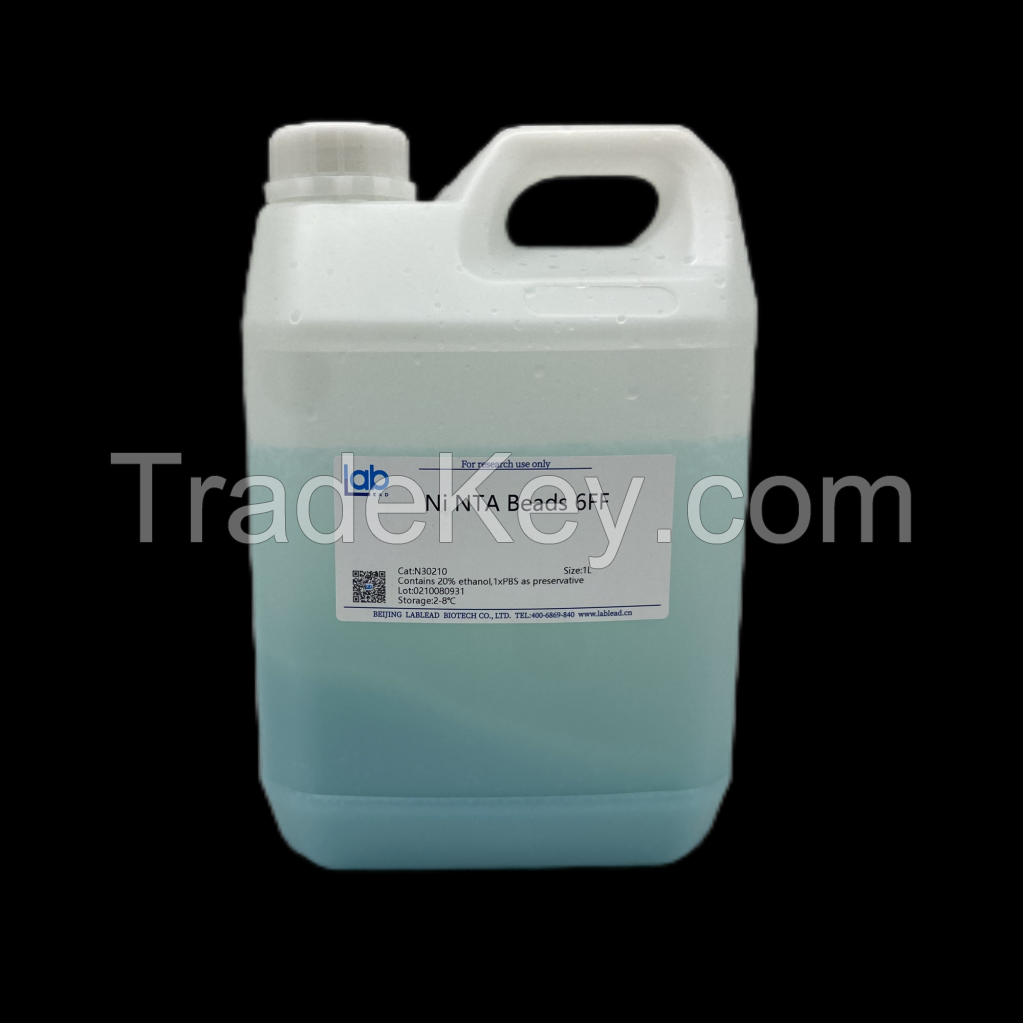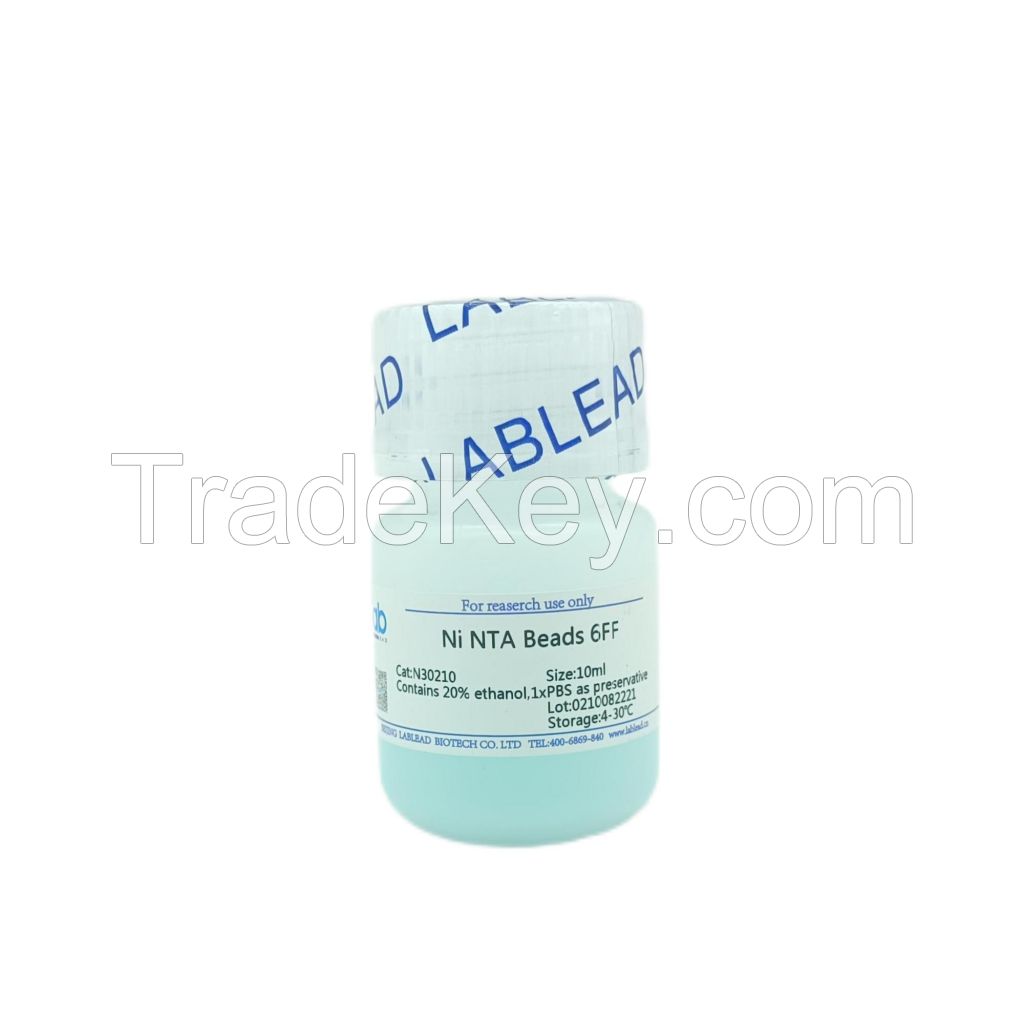




سعر فوب
أحصل على آخر سعر|
- Minimum Order
بلد:
China
نموذج رقم:
-
سعر فوب:
الموقع:
China
سعر الحد الأدنى للطلب:
-
الحد الأدني للطلب:
-
تفاصيل التغليف:
-
موعد التسليم:
7-15 days if in stock
القدرة على التوريد:
-
نوع الدفع:
T/T, L/C, D/A, D/P, Western Union, Money Gram, PayPal, Other
مجموعة المنتج :
| Product name | Ni-NTA 6FF beads |
| Ligand | subnitrotriacetic acid (NTA) |
| Matrix | Highly crosslinked 4% agarose gel |
| capacity | *0mg his label protein |
| Microsphere size | *5% |
| maximum pressure | Soluble in DMF |
| pH stability range | ***2(work),***4(washing) |
| Name | Volumn | formula |
| Lysis Buffer | 1L |
*0 mM
NaH2PO4(7.*0 g
NaH2PO4·2H2O),**0 mM
NaCl(*7.*4 g
NaCl),*0 mM
imidazole(0.*8 g
imidazole) Adjust pH to 8.0 with NaOH solution,Use 0.*2 or 0.*5 μm filter membrane to remove bacteria. |
|
Wash Buffer |
1L |
*0 mM
NaH2PO4(7.*0 g
NaH2PO4·2H2O),**0 mM
NaCl(*7.*4 g
NaCl),*0 mM
imidazole(1.*6 g
imidazole) Adjust pH to 8.0 with NaOH solution,Use 0.*2 or 0.*5 μm filter membrane to remove bacteria. |
| Elution Buffer | 1L |
*0 mM
NaH2PO4(7.*0 g
NaH2PO4·2H2O),**0 mM
NaCl(*7.*4 g
NaCl),**0 mM
imidazole(*7.0 g
imidazole) Adjust pH to 8.0 with NaOH solution,Use 0.*2 or 0.*5 μm filter membrane to remove bacteria. |
| Name | volumn | formula |
| Lysis Buffer | 1L |
8 M
Urea(**0.*0 g
urea),**0 mM
NaH2PO4(*5.*0 g
NaH2PO4·2H2O),**0 mM
Tris·HCl(*5.*6 g
Tris·HCl) Adjust pH to 8.0 with NaOH solution,Use 0.*2 or 0.*5 μm filter membrane to remove bacteria. |
| Wash Buffer | 1L |
8 M
Urea(**0.*0 g
urea),**0 mM
NaH2PO4(*5.*0 g
NaH2PO4·2H2O),**0 mM
Tris·HCl(*5.*6 g
Tris·HCl) Adjust pH to 8.0 with NaOH solution,Use 0.*2 or 0.*5 μm filter membrane to remove bacteria.。 |
| Elution Buffer | 1L |
8 M
Urea(**0.*0 g
urea),**0 mM
NaH2PO4(*5.*0 g
NaH2PO4·2H2O),**0 mM
Tris·Cl(*5.*6 g
Tris·Cl) Adjust pH to 8.0 with NaOH solution,Use 0.*2 or 0.*5 μm filter membrane to remove bacteria. |
| بلد: | China |
| نموذج رقم: | - |
| سعر فوب: | أحصل على آخر سعر |
| الموقع: | China |
| سعر الحد الأدنى للطلب: | - |
| الحد الأدني للطلب: | - |
| تفاصيل التغليف: | - |
| موعد التسليم: | 7-15 days if in stock |
| القدرة على التوريد: | - |
| نوع الدفع: | T/T, L/C, D/A, D/P, Western Union, Money Gram, PayPal, Other |
| مجموعة المنتج : | Protein Biology |



